
Boxed, you say?
A few weeks ago an excellent chap by the name of Paul Miles sent me an email saying he had some Executel bits in his shed and would
I like him to dig them out?
Yes please!
Paul was the Software Project Manager of the Executel while at STC on the south coast and picked up a few bits and pieces
when he left in 1985, just before STC bought ICL. I went to visit him and his wife Christine last weekend and he presented me with
two unused boxed units, a 3910 in a specially made flight case and a box of spares which included some keyboards and dialling cards.
Most importantly there was a complete source dump on good old music ruled fanfold as well as 3 boxes of 8" disks! This all but
confirms my belief that the code came from an Intel MDS80 design station.
Unfortunately it's in PLM which is a language I have no experience of whatsoever, but it's readable and most importantly has a variable
listing showing which I/O ports do what. This means I now know that my own 3910 is looping whilst trying to initialise the SAA5070
"LUCY" modem which was a fear a few weeks ago because spares are scarce to say the least.
Other documentation includes full schematics and a complete service guide which explains exactly how the monitor software works,
essentially switching through the running 'tasks' every 20ms. The hardware interrupts of the 8085 CPU allow screen refreshing, tape I/O,
tone dialling pulse generation amongst other things. What will be interesting is checking my own hand drawn schematic against the real
one just to see how close I was :) Crucially the docs also explain how the power-on RESET circuit works which would've been a great
help 6 months ago, as Paul said "I could have saved you an awful lot of leg work couldn't I" :)
Paul also explained the relationship between the 3910 Executive unit and the 3911 Secretarial unit. They were linked together by a thick
15-way cable so they could communicate allowing the Secretary to update diary and phonebook entries on the main unit as well as pass
calls through. There was no actual processing power in the 3911, all comms were serial back to the main 3910.
The Astec 8151 PSUs were a bit of an achilles heel because of how they were mounted - upside down in a thick metal box with no active
cooling. This meant that as long as the unit was powered all was well but they had a habit of going pop when turned off after a few
month's usage. Both the unused units have had their PSUs taken as spare parts but the flight cased machine still has one so a job for
the weekend is to replace the X1 RIFA filtering capacitors because they WILL explode on first power up and nobody wants THAT.
Other things taken into consideration at design time were screen burn on the 5" monitor and the service life of the microcassettes,
little things to improve a component's life. For example the screen would blank after a few minutes' inactivity apart from a small
date/time display which is evident on mine. No other burn though which is impressive. Cassette life was improved by not doing a full
write after every database update - they'd be written to a smaller buffer area on the tape then every so often (or on command) the
full database would be updated.
Tools were available to attempt repair on scrambled tapes too as well as basic machine diagnostics/screen alignment.
All in all a very worthwhile trip and many thanks to Paul for giving me the capability of setting up a repository for all things Executel,
such a well designed machine needs to be remembered!
More as I discover it. One thing I've just read in the service manual is a worry, it says that without a cassette loaded there's only
a small subset of things you can do because 'the rest of the Executel software is on tape'. Of course, I have the disks containing all
the software but there's a slight issue in getting it back onto a microcassette! The boxed units have a 'getting started' tape and the
world-weary unit has a tape too, hopefully still readable.
To answer one of my own questions on the previous page I was correct with my memory map guesswork. In my notes
on the disassembled code I wrote:
0062 : C2 5C 00 jnz L005C ;keep going until 0xFC00
0065 : CD 5B 06 call L065B ;load 0xFC00 to 0xFFBF with 0x20
;this is 959 bytes, close to 1024 for 2114 RAM?
;0x20 is a space character...(32)
;
0068 : CD 42 22 call L2242 ;ins and outs, where we currently loop.
Turns out that's exactly right :)
Pictures
 |  |  |  |
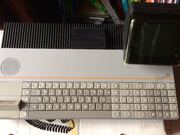 | 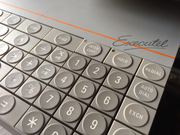 | 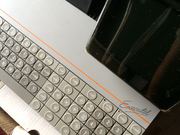 | 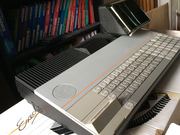 |
 |  | 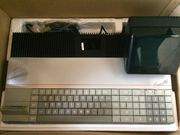 | 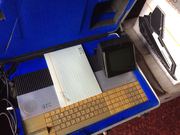 |
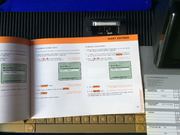 |  |  |  |